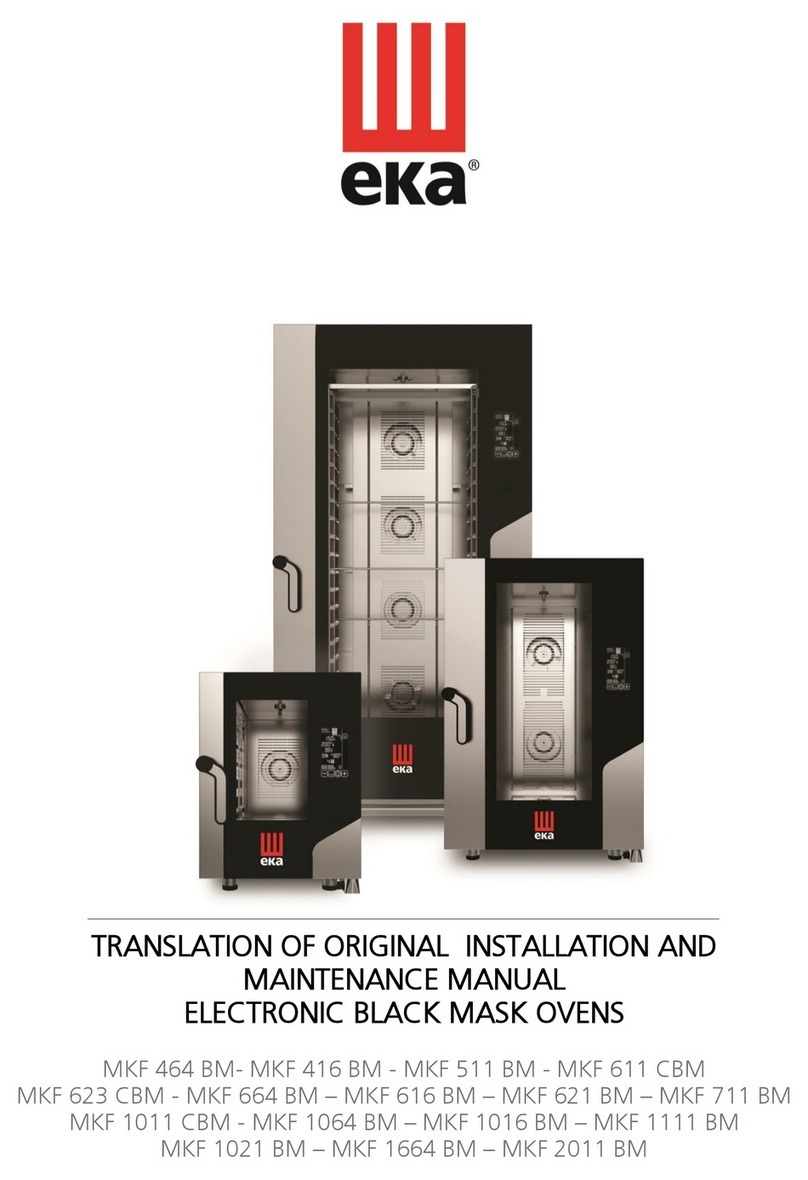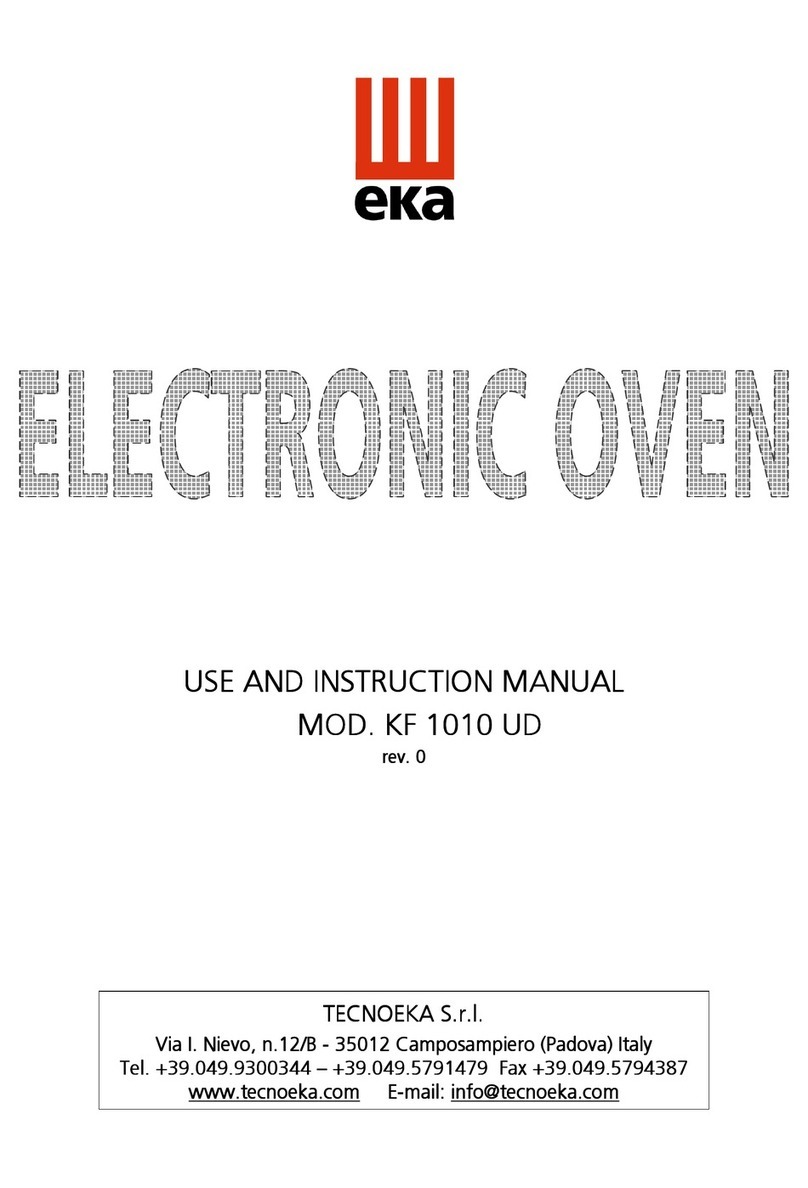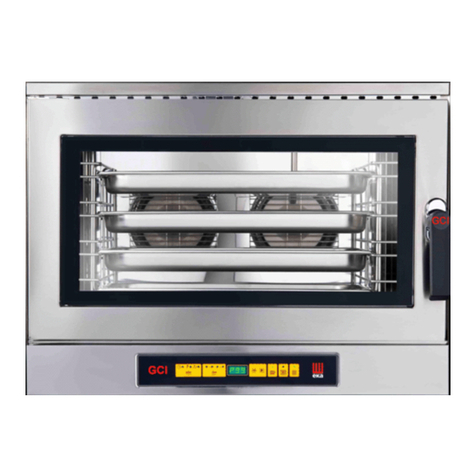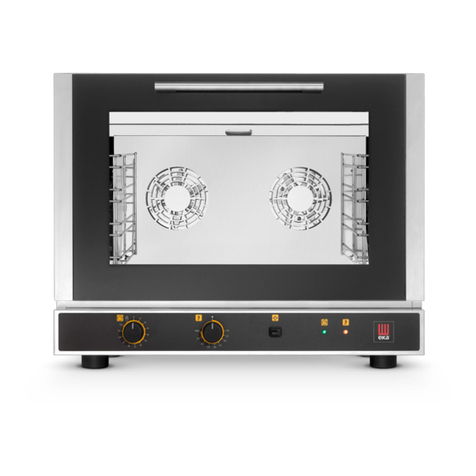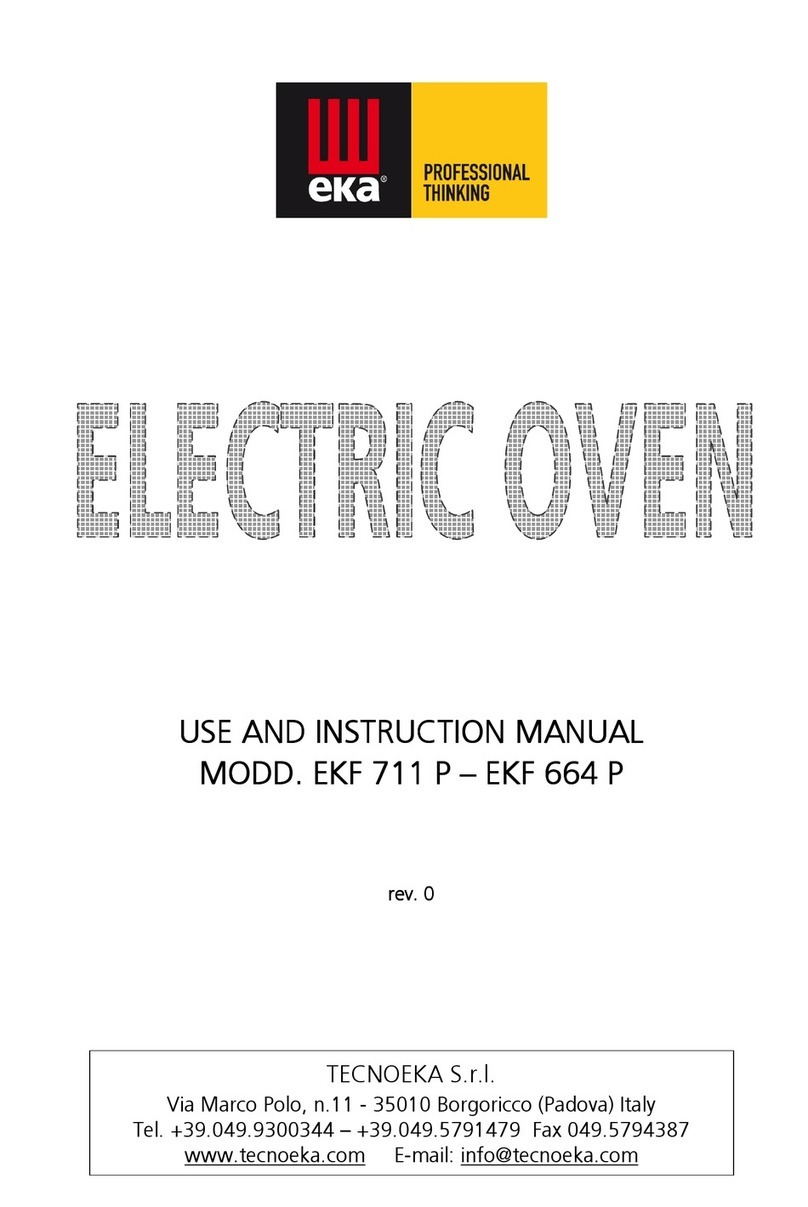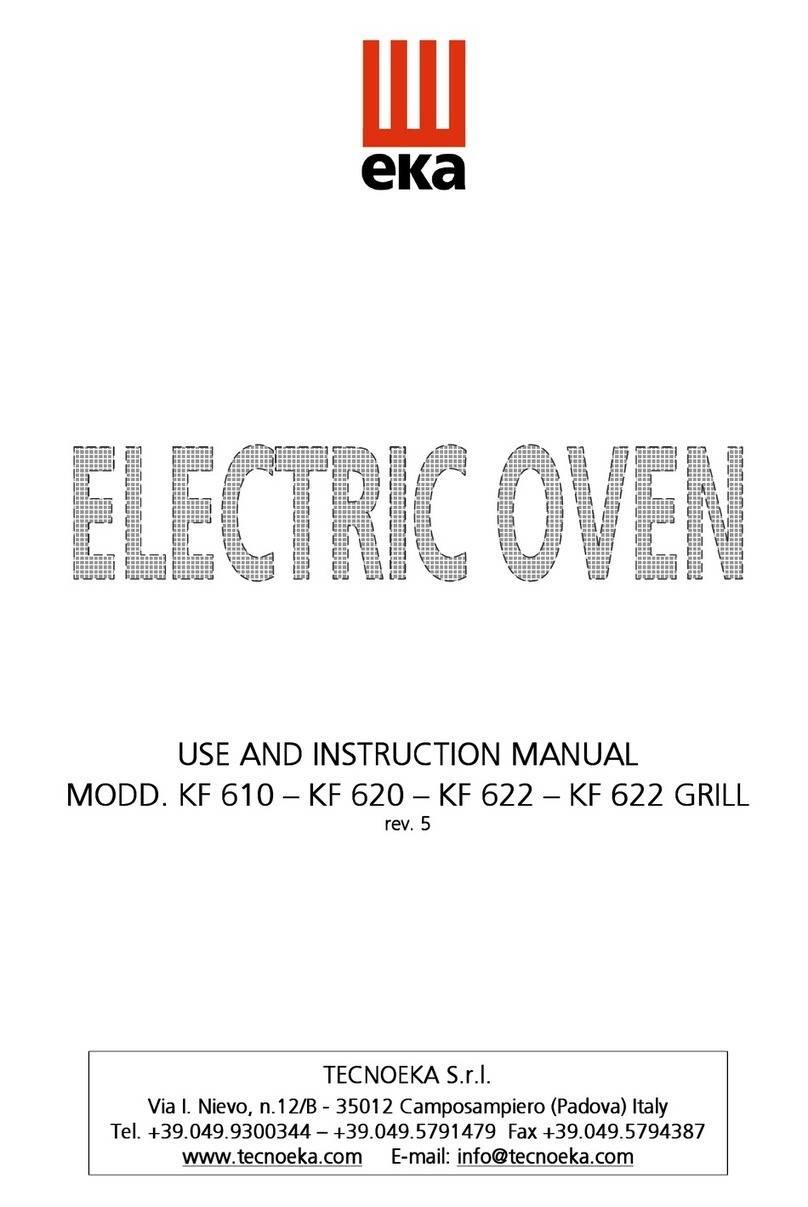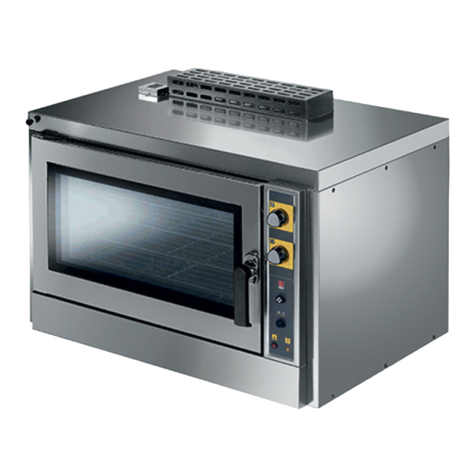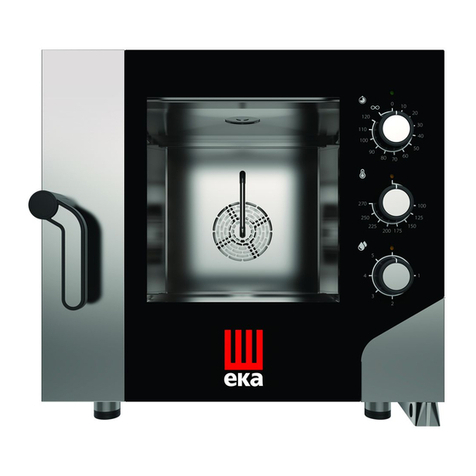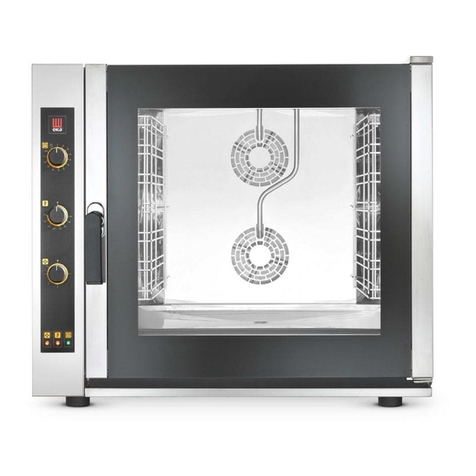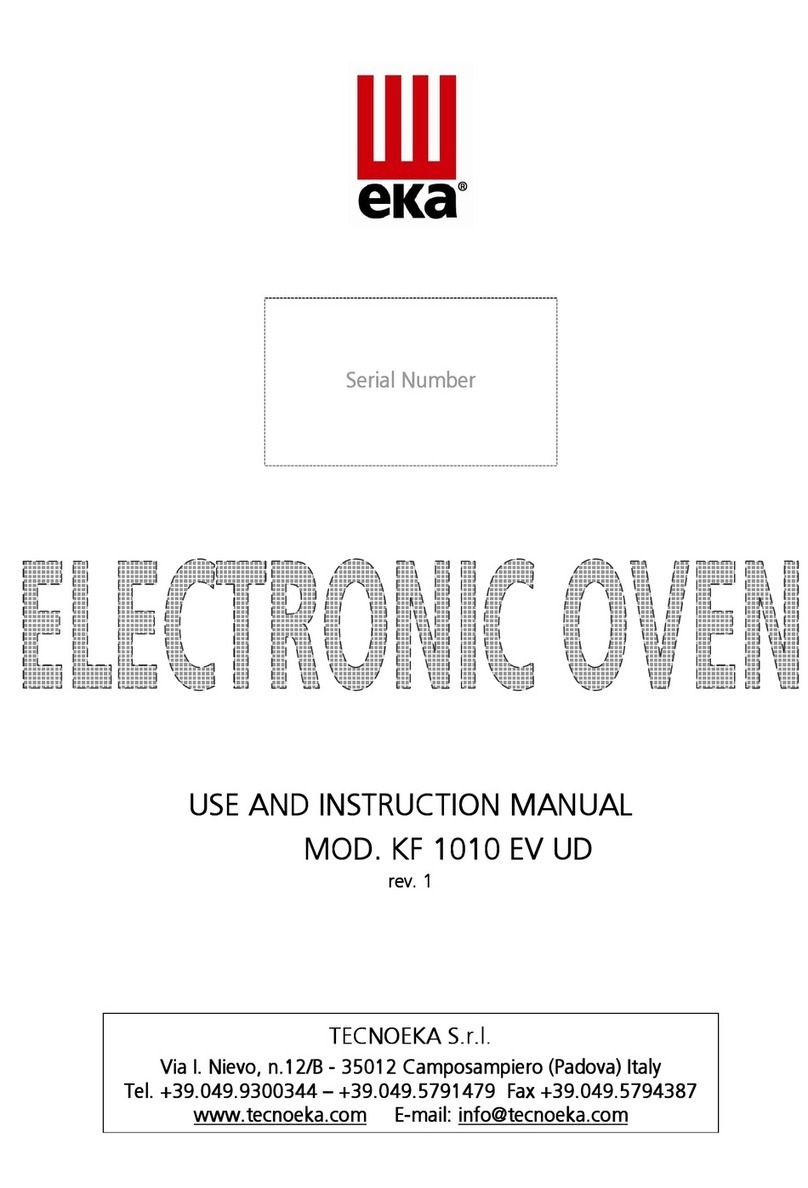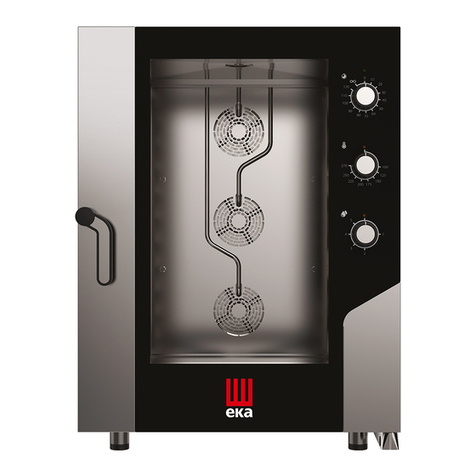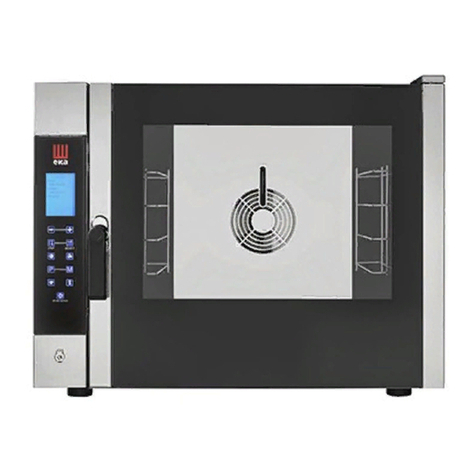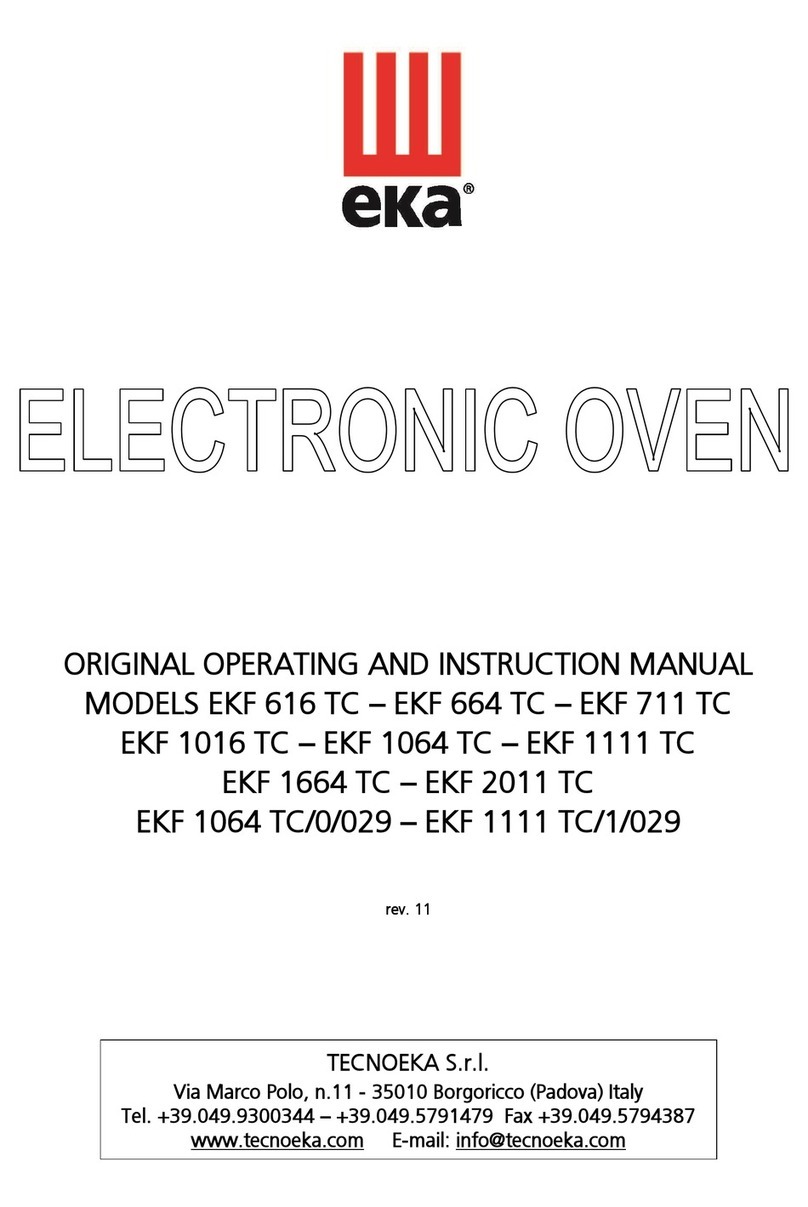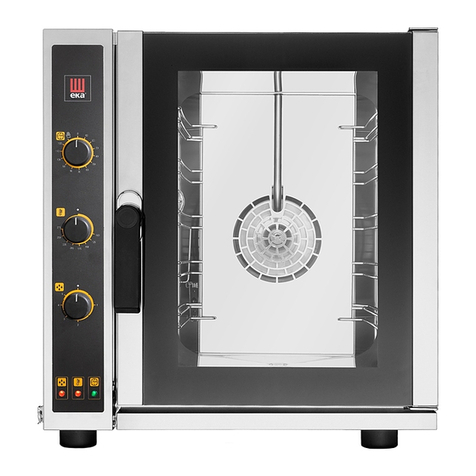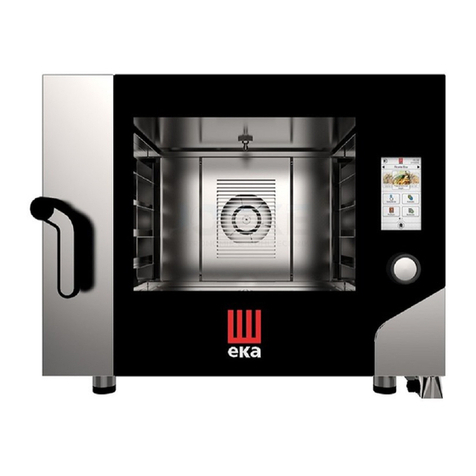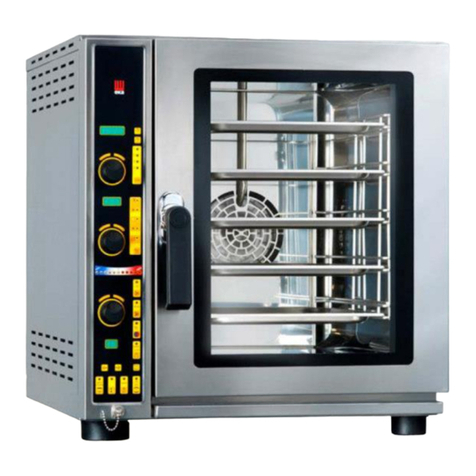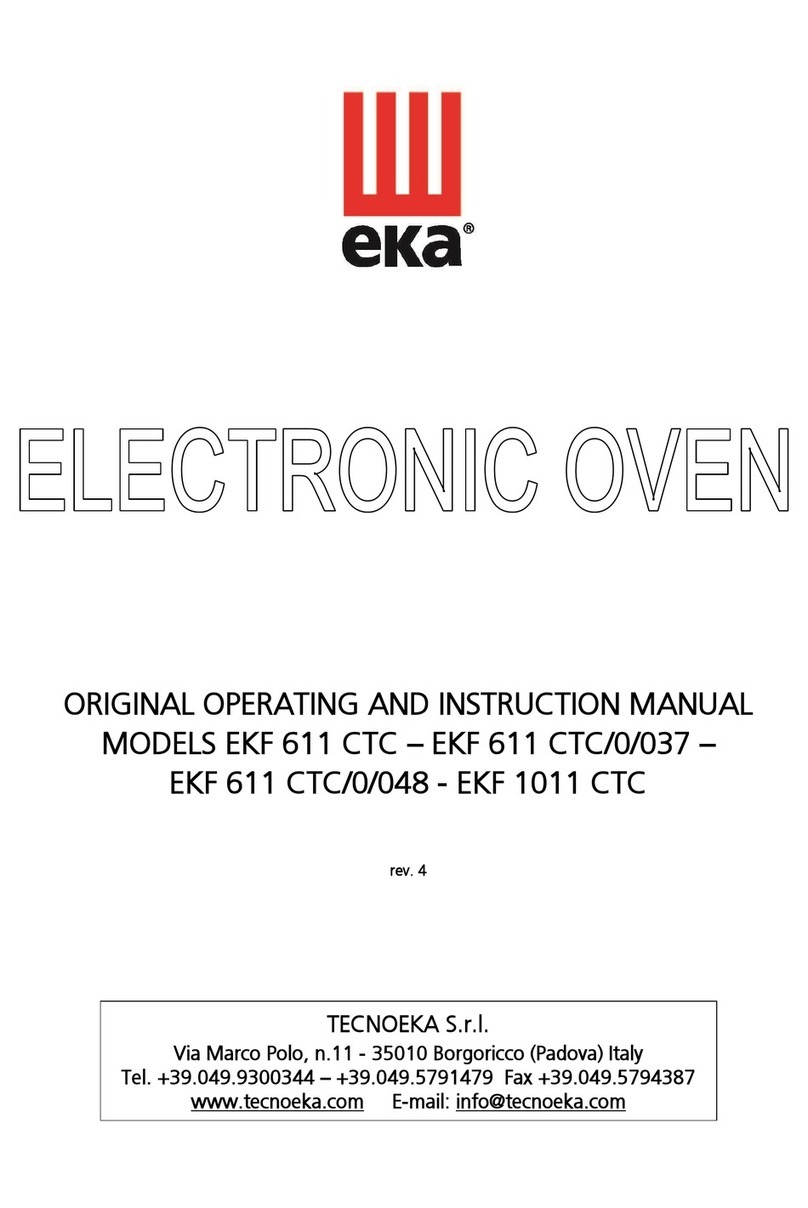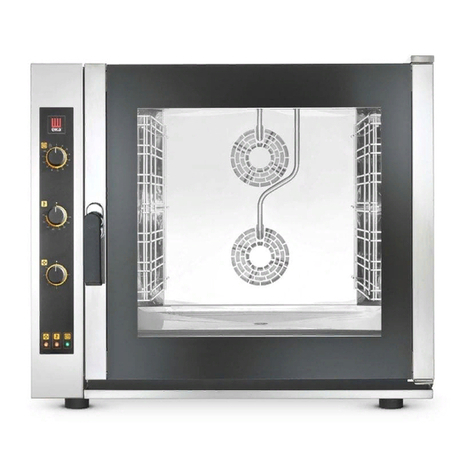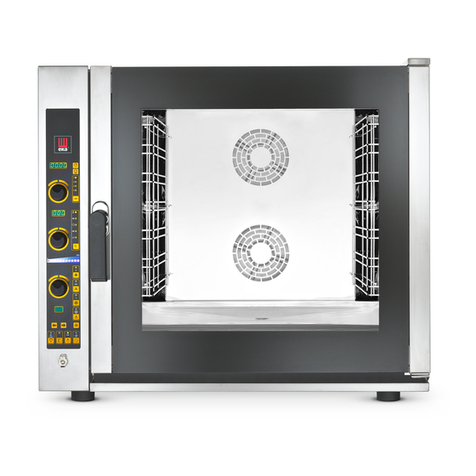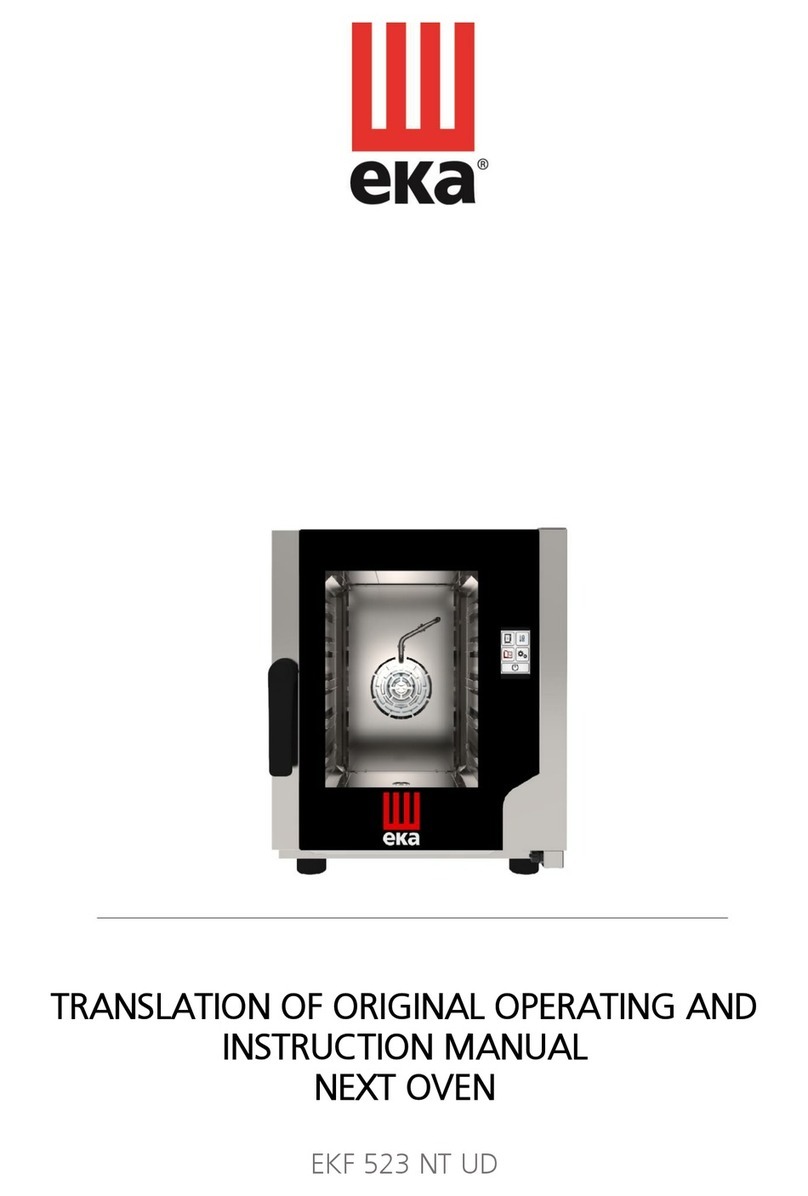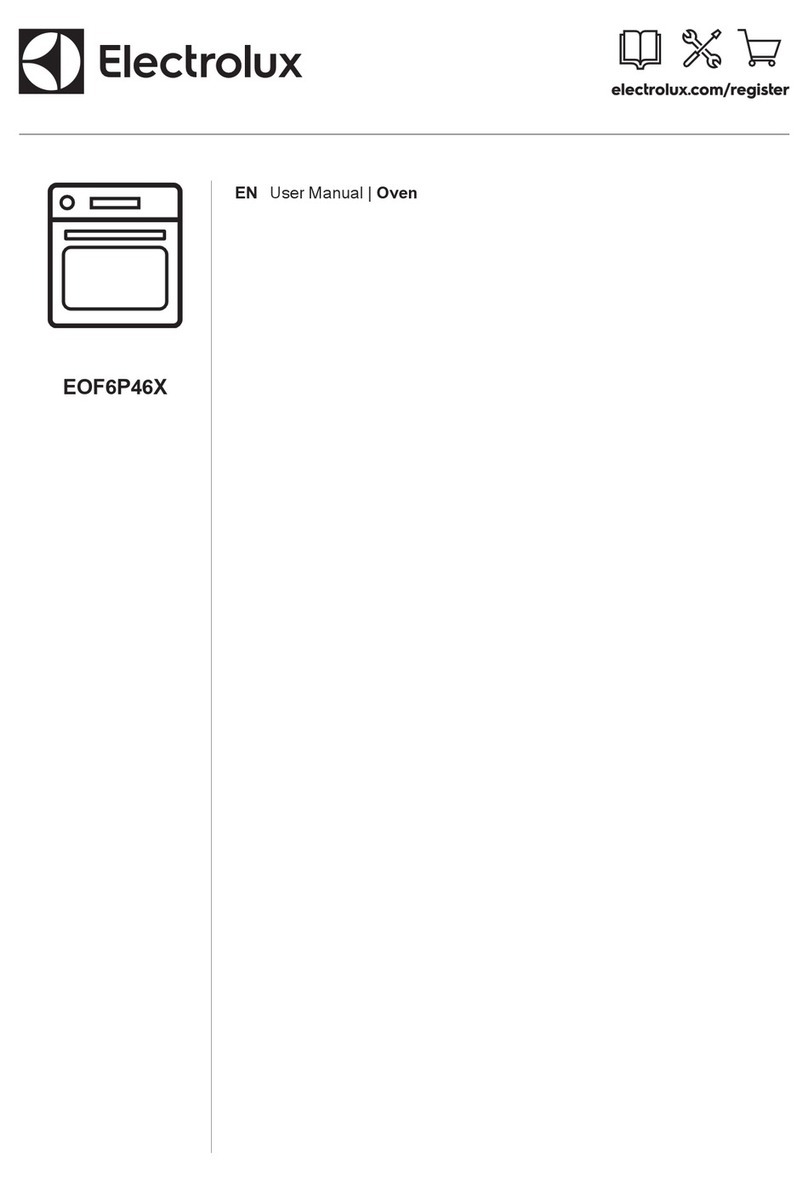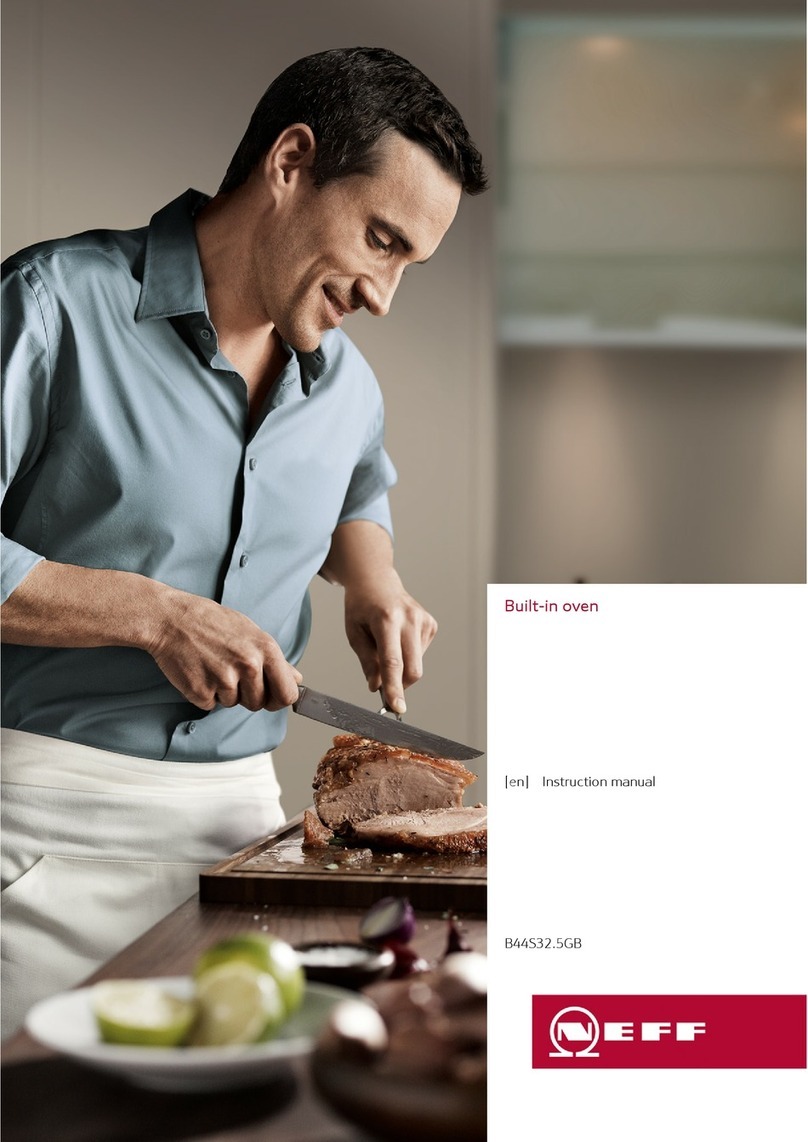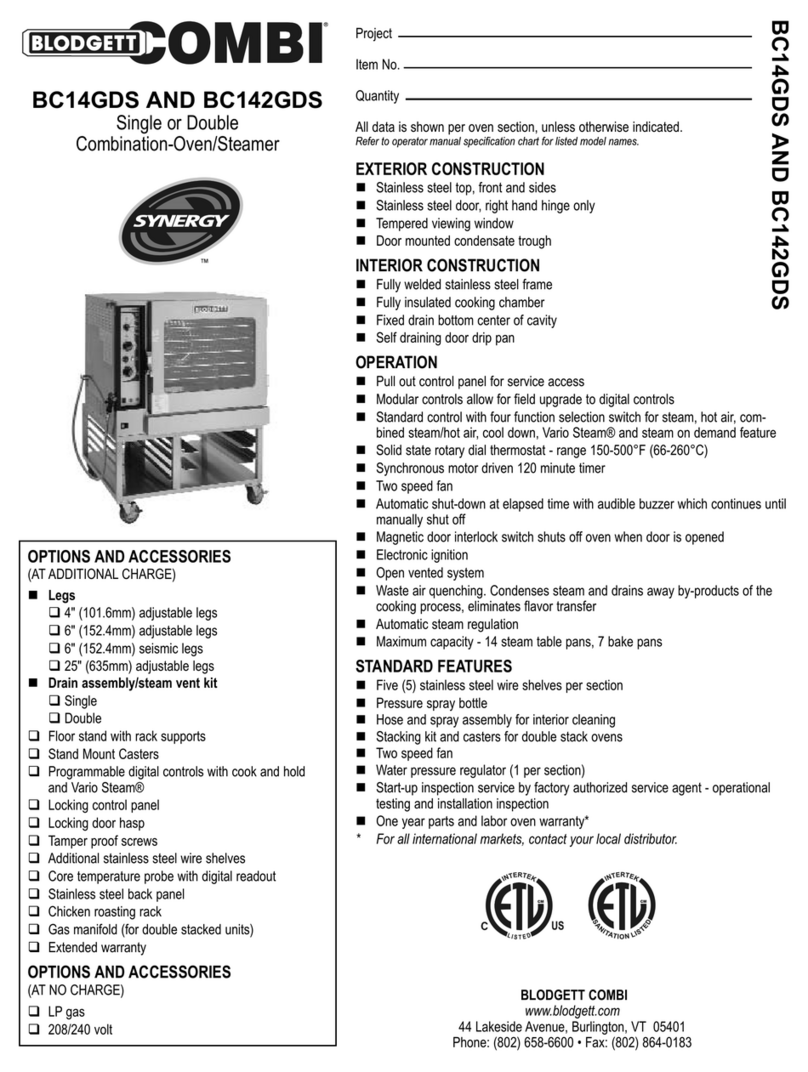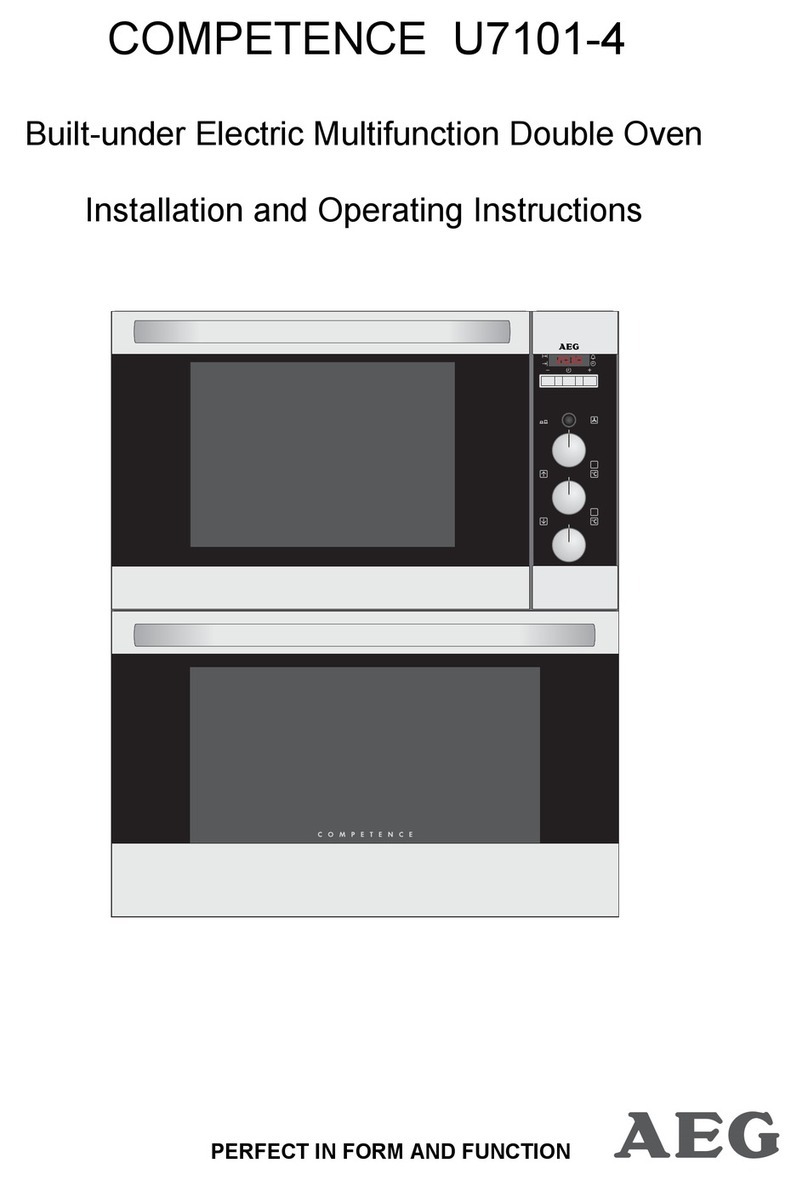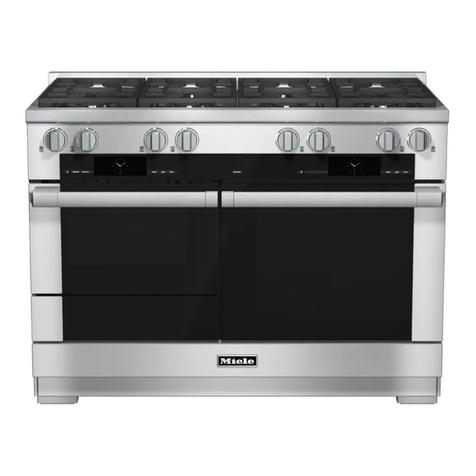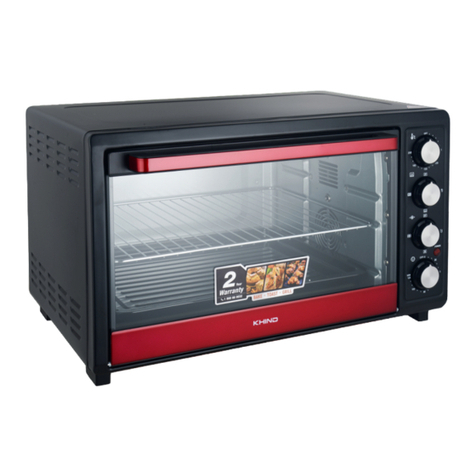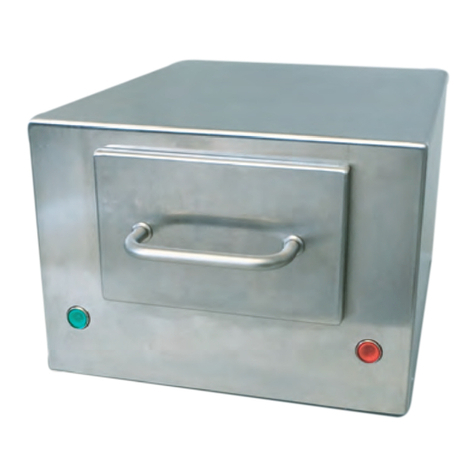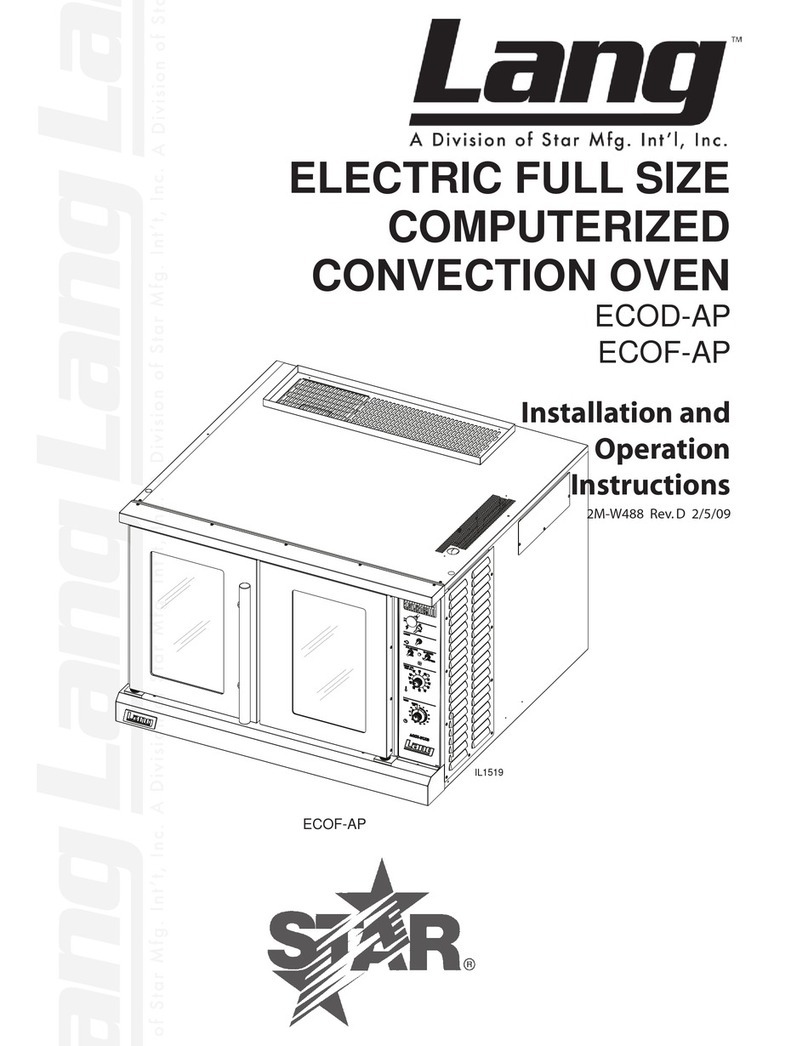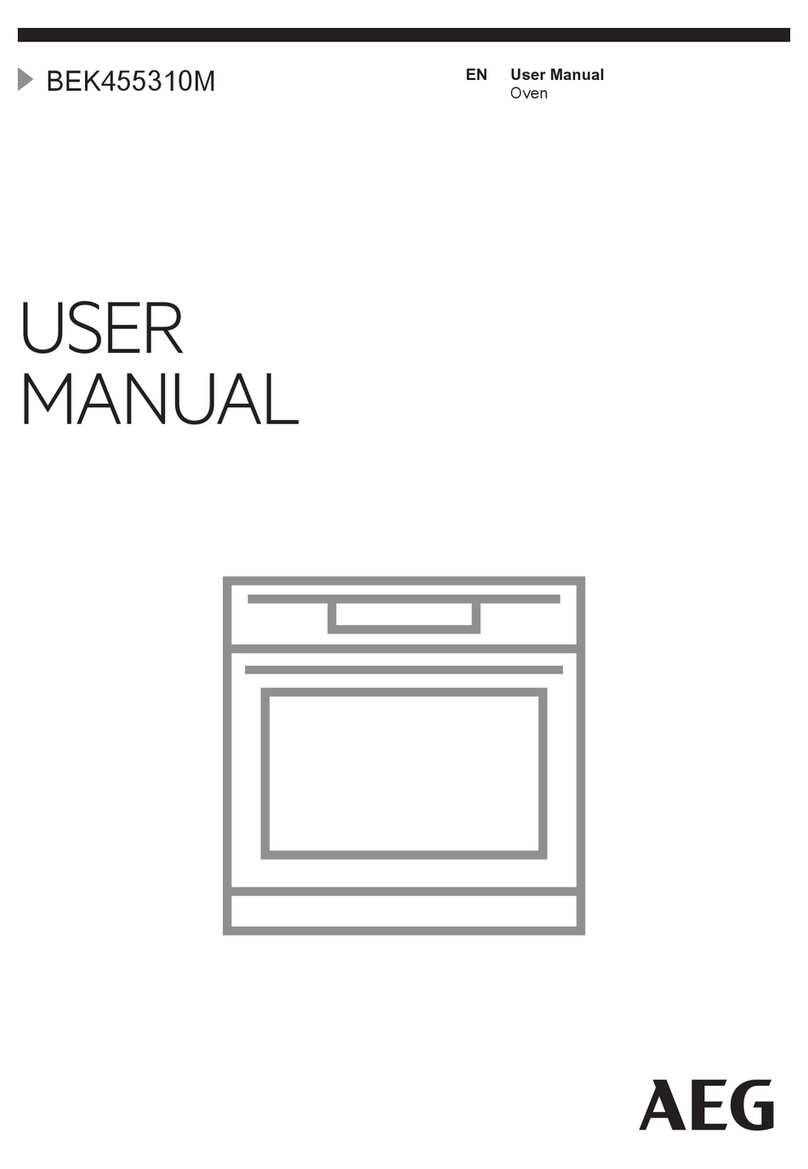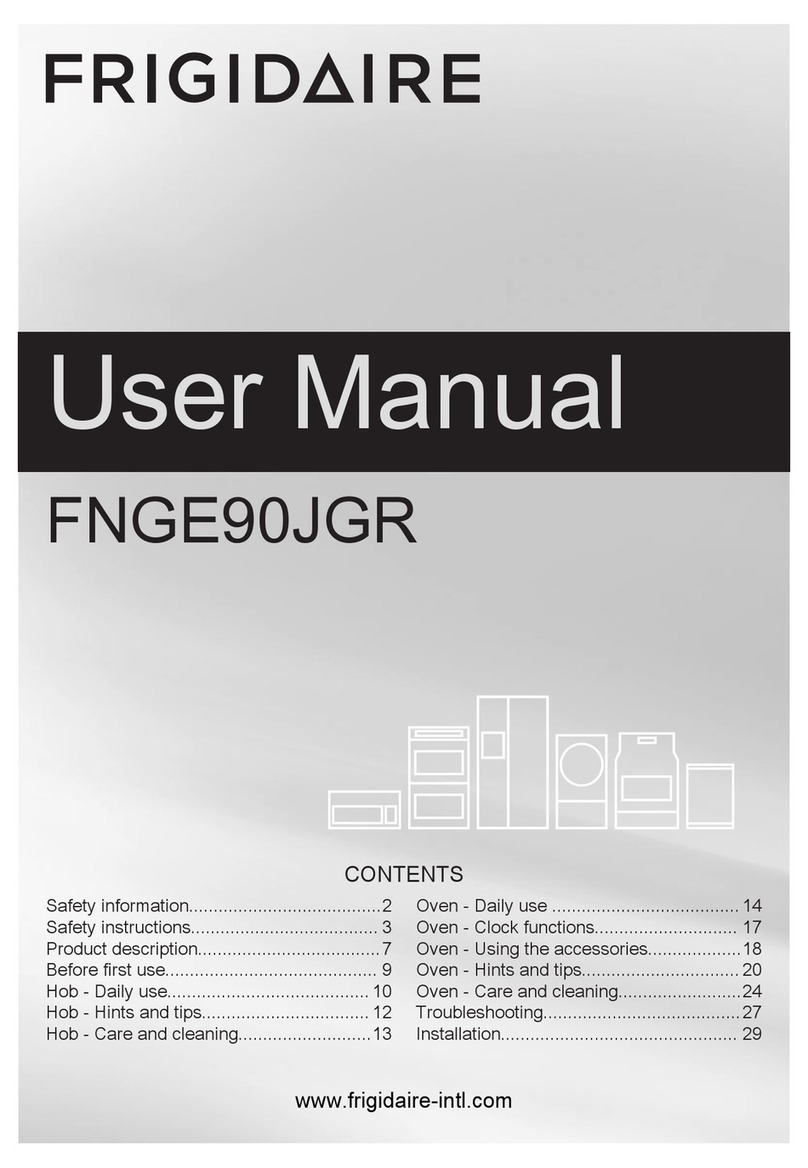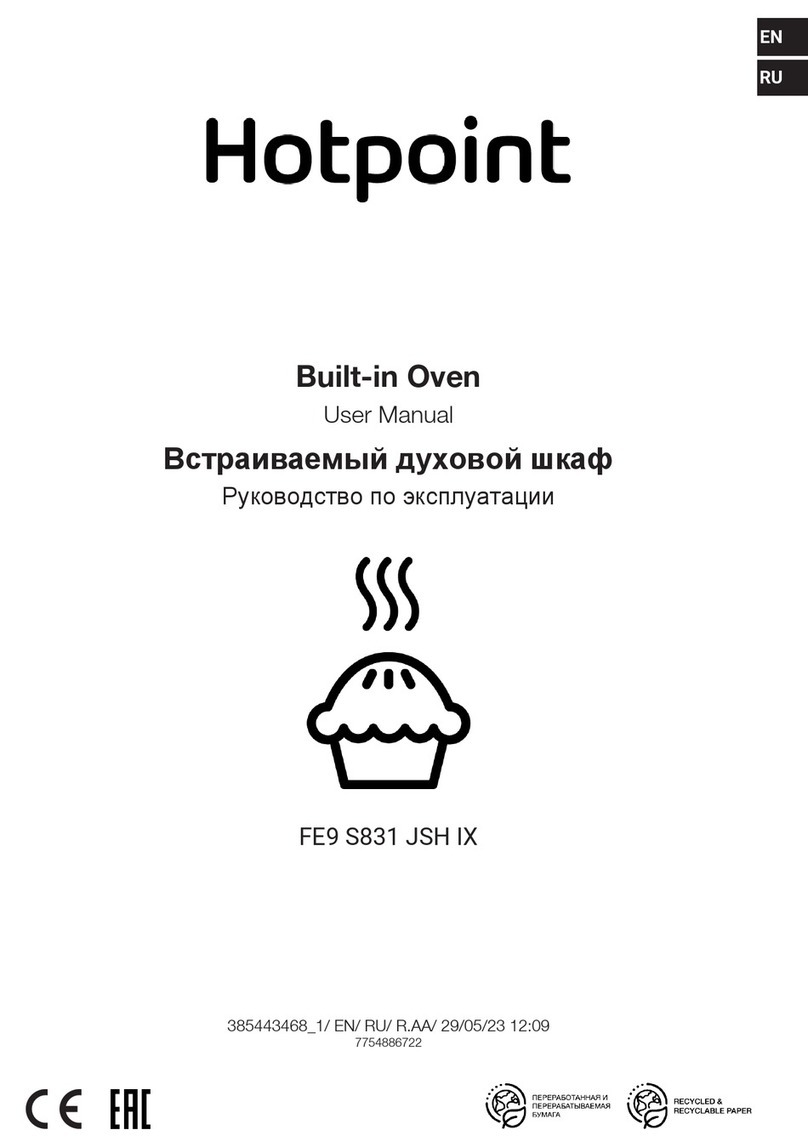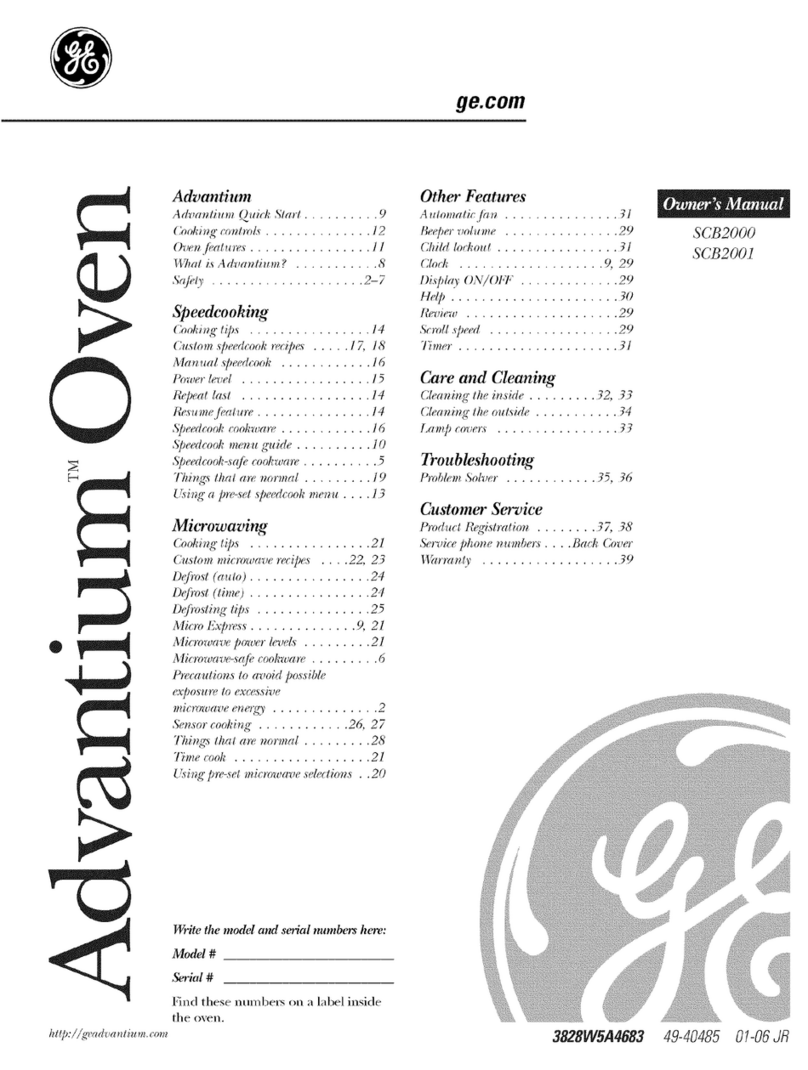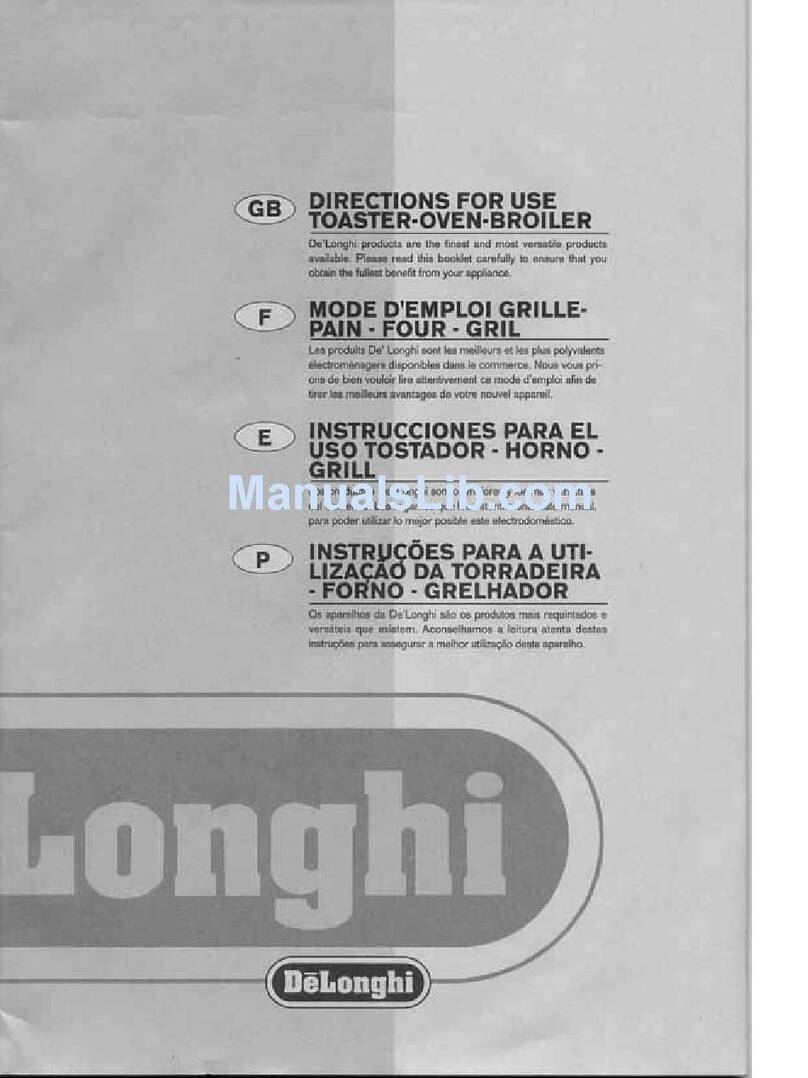7
2.3 Unpacking the appliance
Remove the packaging before installation. It consists of a wooden pallet supporting the appliance and a
cardboard casing protecting it. Ensure the appliance has not undergone any damage during transport;
otherwise immediately alert your dealer and/or carrier.
2.4 Removal of the protective film
Before using the appliance accurately remove the special film protecting the stainless steel components,
avoiding glue residues on the surfaces; if required, immediately remove them using an appropriate non
flammable solvent. Do not use any tools that might scratch the surfaces or any acid-based or abrasive
detergents.
2.5 Protective film/package disposal
TECNOEKA has been committed for years to increasing the environmental compatibility of its equipment,
with continuous efforts to reduce energy consumption and waste. TECNOEKA intends to protect the
environment and recommends to dispose of all different types of material, in the appropriate separate
collection containers.
The protective film and packaging must be disposed of in strict compliance with the regulations in force in
the country of installation of the appliance. The various materials (wood-paper-carton-nylon-metal tacks)
that may comprise the packaging are potentially dangerous and must be kept out of reach of children and
animals; they must be duly separated and delivered to the respective collection centres (recycling centres).
In any case please adhere to the local environmental protection regulations
2.6 Stand feet kit (Only 412-423 models)
The 4 stand feet kit are located inside the device and must be screwed into the four threaded
holes on the bottom base.
2.7 Placement
Check the place of installation making sure that the transit areas (any doors and corridors) are sufficiently
wide and the floor supports the appliance’s weight (the appliance’s weight and dimensions with/without
pallets are provided in the attached “Technical Data Sheet”). The appliance must be transported with
mechanical means (e.g. pallet jack). The installation rooms must be well-ventilated with permanent aeration
vents; must be equipped with the proper electrical and hydro systems, built in accordance with the
standards related to facilities and workplace safety in the country of installation.
The maximum working height, referring to the highest surface level, must be 1.6 metres from the floor.
After installing the appliance, if required, apply the suitable adhesive symbol (supplied) at a height of
1.6 metres. To favour air circulation around the appliance, leave a space of about 10 cm between the
appliance sides and the surrounding walls (or other appliance), and between the back and the back wall
(see the attached “Technical Data Sheet”). The appliance must be positioned so that the rear wall is easily
accessible to set up various electrical connections and to carry out any possible maintenance. Do not install
the appliance near any equipment that may reach high temperature values (e.g. deep fryers).
Should the appliance be installed near walls, shelves, counters and the like, these must be non-flammable
or heat-resistant; otherwise, they must be protected by adequate fire retardant coating. Accordingly, it is
indispensable to act in compliance with the fire prevention regulations in force.
Cooking produces hot smoke/vapour and odours which are extracted through the suitable vent device
located at the top of the appliance and marked with the symbol .It is recommended to place the
appliance under an extraction hood or to use the suitable TECNOEKA. condensation hoods in order to
convey the smoke/vapour to the outside.
Warnings
Make sure there are no objects and/or materials obstructing the oven’s exhaust device.
The hot smoke/vapour produced during cooking must run freely out of the exhaust device in order not to
compromise the regular operation of the oven.
Inflammable materials must not be left near the oven’s exhaust device.
